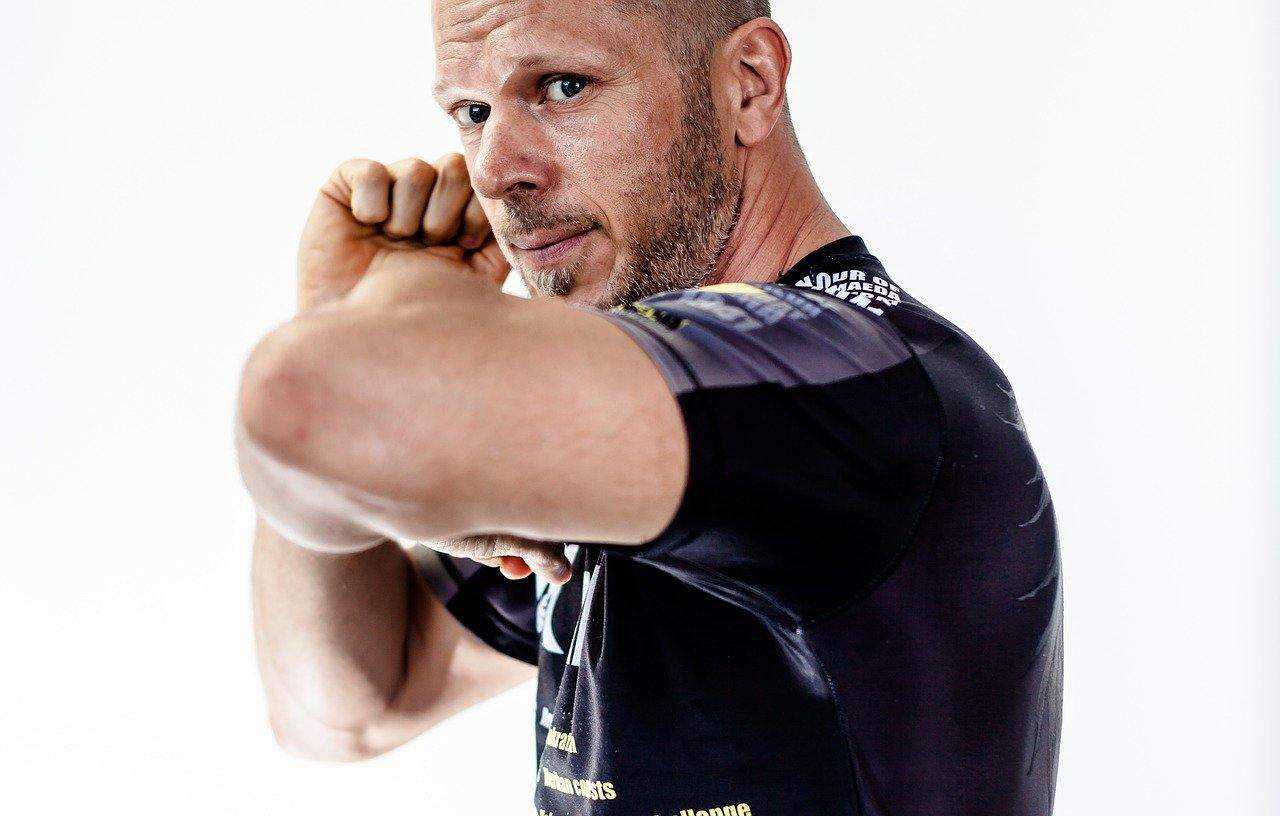The competition in many sports is structured through divisions with weight categories.
In this context, it is sometimes necessary to reduce kilos to gain a mechanical advantage at a physical level over the rest of the competitors. But cutting weight carries certain risks.
It is common to observe in the media excessively risky protocols to beat the scale among professional athletes.
These put health at risk, but the mechanisms applied are not optimal for amateur competitors.
What is cutting weight?
Cutting weight is mostly reducing the amounts of water the body contains to reach the maximum limit indicated by a competition division, and recovering this amount of kilos almost entirely during the 24 hours between the weigh-in and the fight.
Why do fighters cut weight?
As a general rule, fighters use the strategy of cutting weight if they want to fit into a certain weight category before their next fight.
They try to cut weight to do so before the fight weigh-in (usually a day before).
Cutting weight involves reducing the “water weight” of their body. To achieve this, fighters may stop eating and drinking, run more, sleep wrapped in blankets and plastic, or spend a lot of time in saunas.
They may also eat high-fat and protein meals and low in carbohydrates, starches, or sugar, drink less and less water, or live on a completely salt-free diet.
This, of course, is a dangerous practice and can hinder the ability of these skeletal-looking fighters to fight properly, in addition to carrying the potential for long-term health risks for the team.
First key point: realistic goals
Cutting weight can provide a competitive advantage, but it should not be practiced in all cases. For example, among adolescent athletes, it is a practice with more drawbacks than benefits.
In these cases, the body is still developing. Subjecting it to a high energy deficit or severe dehydration could impact metabolism functioning in the future, affecting health status.

At the same time, it is essential to set realistic goals when cutting weight. It may be possible to reduce 4 or 5 kilos before a competition, if the weigh-in is the day before. However, a greater reduction can cause dramatic drops in performance.
Moreover, in some disciplines, the weigh-in occurs just before the competition, so it is not practical to implement a large weight cut, as depleted nutrients will not be recovered.
Anyway, scientific literature shows how in many cases, inadequate protocols are often implemented to beat the scale (1).
It is possible to reduce 4 or 5 kilos before a competition, if the weigh-in is the day before. However, a greater reduction can cause dramatic drops in performance.
How to cut weight for competition safely?
We will show you the steps to follow to cut weight effectively and safely, maximizing performance to meet competitive goals.
Anticipation
The first thing is to plan the season, marking the important competitive scenarios to reach in the best possible condition. This is where the weight cut will be implemented to gain a greater advantage.
However, weight loss should be initiated with some anticipation, to perform well in work sessions and not subject the athlete to high stress.
Different protocols can be used to improve dietary adherence and prevent the athlete from feeling hungry or anxious.
One of them is intermittent fasting, which has shown benefits in improving body composition and metabolic efficiency (2).
However, it will be necessary to plan work sessions to avoid strength training in a fasting state. Otherwise, the risk of injury could increase.
Ideally, if you want to cut 4 kilos, design a 4 or 5-week meal plan with the goal of making the loss very gradual.
Glycogen depletion and dehydration in the final moments to cut weight
When the body fat percentage is already at the minimum acceptable, but there are still a few grams to adjust to beat the scale, it is time to deplete glycogen and implement slight dehydration.
To do this, simply reduce the carbohydrate load in the diet, although without entering a continuous ketosis state, to avoid initial side effects such as nausea or constipation.

To reduce hydration in the body, water intake can be slightly limited, also increasing the consumption of diuretic foods such as tea, coffee, and pineapple.
However, you have to be very precise in these contexts, as dehydration is very dangerous for the athlete (3).
You should never execute a loss of more than 3% of the athlete’s total body water. Otherwise, besides putting health at risk, a significant reduction in performance will be experienced.
Also, keep in mind that both strategies are applied in the final moments, 2 or 3 days before the weigh-in. This is because they are not sustainable over time.
Replenishment of nutrients and water
Once the entire weight cut is executed and the scale is beaten, it is time to replenish all the lost nutrients. It is also possible to experience a certain overload of glycogen stores, given the rest situation and high carbohydrate intake.
Depending on the amount of weight cut, the refeeding management will be different. In extreme situations, mineral and electrolyte intake must be monitored, to avoid refeeding syndrome (4).
Keep in mind that there are at least 24 hours until the competition, so it is optimal to plan around 5 or 6 meals.
In all of them, foods with high nutritional density must be provided, ensuring a high intake of high biological value proteins and complex carbohydrates.
It is also optimal to plan adequate rehydration, with continuous water consumption to replenish all lost fluids. Always use non-carbonated mineral water, slightly cool to speed up gastric emptying.
It should be noted that, contrary to what was done until a few years ago, ultra-processed foods and fast food should be avoided. The goal is not to incorporate sugars regardless of their quality and origin, but to ensure the intake of high biological value nutrients.
Risks when cutting weight
We must not forget that cutting weight to compete is not a risk-free practice. If practiced improperly, negative health consequences can be experienced.
The most immediate of all is dehydration, which can put the athlete’s life at risk (5), especially when subjected to very long sauna periods, a practice that is discouraged.
At the same time, a complete depletion of nutrient stores can negatively affect the athlete’s physical condition, impairing their abilities at the competitive moment. Therefore, whenever possible, the loss of reserves must be controlled and limited.
Likewise, it is not uncommon to find athletes who resort to pharmacological aids to cut weight and thus beat the scale. The most common are diuretics, medications that should not be consumed without a specialist’s prescription.
Their use can increase the risk of dehydration, affect cardiovascular health, and cause cramps due to an electrolyte imbalance.
A complete depletion of nutrient stores can negatively affect the athlete’s physical condition, impairing their abilities at the competitive moment. Therefore, whenever possible, the loss of reserves must be controlled and limited.
How many times can you cut weight?
One of the most frequent questions when cutting weight is whether such protocols can be implemented frequently without harming health.
The truth is that it is not recommended, even following a relatively safe method like the one we have discussed, to cut weight to compete frequently.
It is optimal to only plan strategies of this style, at most, 2 or 3 times a year. Otherwise, negative metabolic effects could be experienced in the medium term.
In this sense, at the beginning of the season, important goals should be set, to reach them in the weight category where the best result can be achieved (6). Thus, weight loss will be planned at these key moments.
It is also important to follow the marked steps, always avoiding consuming any type of drug without medical prescription. This is highly harmful to health.
Cutting weight to compete, a complex practice
As you have seen, cutting weight to compete can carry certain risks. Therefore, it is recommended that these protocols are always monitored by a professional. Otherwise, health could be at risk.
It is also necessary to assess what type of subjects carry them out, as it is not optimal to apply them to adolescent athletes who are in the development stage.
It is also not advisable to implement weight cuts frequently throughout a competitive season; moments must be chosen wisely.
Finally, we must emphasize the need to avoid all those aggressive dehydration mechanisms such as saunas wrapped in plastic, exercising in heat conditions with a raincoat, or total water restriction for a long period. All these put the subject’s life at risk.
Cutting weight to compete can carry certain risks.
Therefore, it is recommended that these protocols are always monitored by a professional. Otherwise, health could be at risk.
Bibliographic references
- Reale, R., Slater, G., & Burke, L. M. (2017). Acute-Weight-Loss Strategies for Combat Sports and Applications to Olympic Success. International journal of sports physiology and performance, 12(2), 142–151.
- Santos, H. O., & Macedo, R. (2018). Impact of intermittent fasting on the lipid profile: Assessment associated with diet and weight loss. Clinical nutrition ESPEN, 24, 14–21. https://doi.org/10.1016/j.clnesp.2018.01.002
- Kim, K. B., & Kwak, Y. S. (2019). Dehydration affects exercise-induced asthma and anaphylaxis. Journal of exercise rehabilitation, 15(5), 647–650. https://doi.org/10.12965/jer.1938470.235
- Runde, J., & Sentongo, T. (2019). Refeeding Syndrome. Pediatric annals, 48(11), e448–e454. https://doi.org/10.3928/19382359-20191017-02
- Bongers, C., Alsady, M., Nijenhuis, T., Tulp, A., Eijsvogels, T., Deen, P., & Hopman, M. (2018). Impact of acute versus prolonged exercise and dehydration on kidney function and injury. Physiological reports, 6(11), e13734. https://doi.org/10.14814/phy2.13734
- Reale, R., Slater, G., & Burke, L. M. (2017). Individualised dietary strategies for Olympic combat sports: Acute weight loss, recovery and competition nutrition. European journal of sport science, 17(6), 727–740. https://doi.org/10.1080/17461391.2017.1297489


